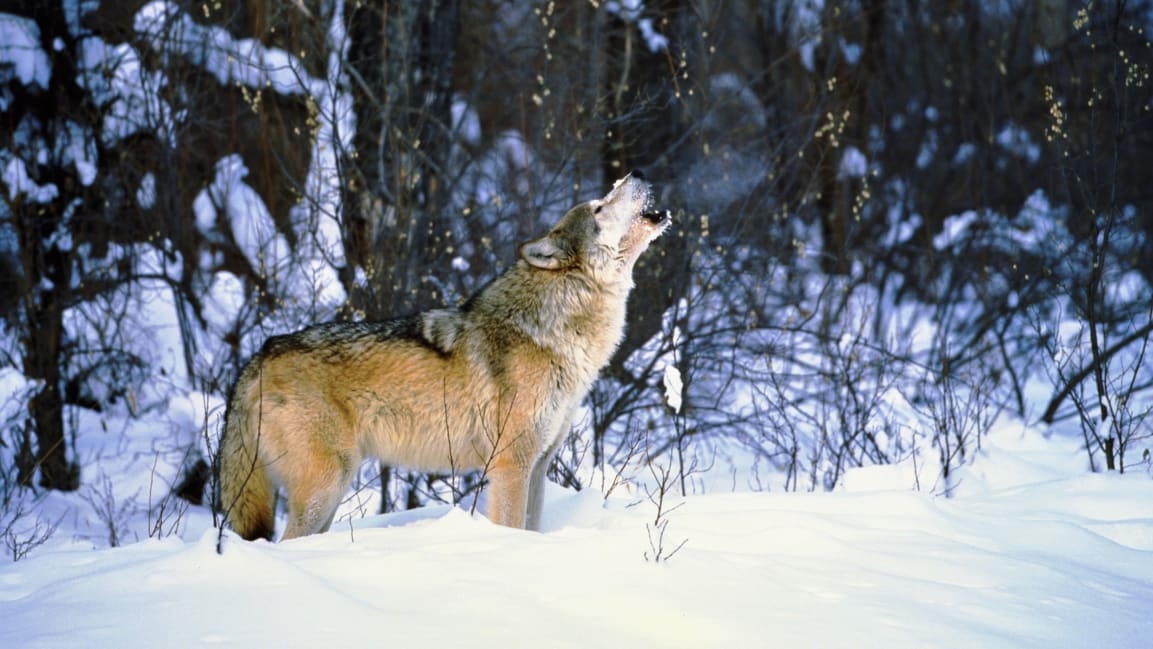This bill would put 90% of Idaho’s gray wolves at risk of being killed
Yet, because of effective lobbying from special interest groups that represent those farmers, in 2020 the Trump administration delisted the gray wolf nationally. But, even years before that, many states were allowed to loosen regulations after applying political pressure. In 2011, wolves were delisted in full in Idaho and Montana, after an assessment that Northern Rocky Mountain wolf levels had recovered enough, granting those states the right to manage their own populations. Since then, Idaho wolves have been subject to annual hunting seasons, and strategic culling by the government.
But, in recent months, possibly empowered by the federal delisting, some Western states have aggressively pushed even further for reducing wolf populations. Citing threats to livestock and game, states such as Montana and South Dakota quickly moved to enact wolf control bills, backed by the agricultural industry. Now, a bill on the Idaho governor’s desk will follow the trend, aiming to cut down the state’s population by 90%. But, it will go a step further: directing funds to hiring hitmen for wolves, putting power into the hands of private contractors and taking it away from the state’s wildlife department. Wildlife advocacy groups oppose the bill, stating that wolves aren’t harming livestock as claimed, and are an essential part of the ecosystem. “This, essentially, is going to remove them from the landscape,” warns Andrea Zaccardi, senior attorney with the Center for Biological Diversity.
Passing in the Idaho Senate, and in the House this week with 58 to 11 votes, the wolf control bill is backed by agricultural groups, which say their livestock are being killed and harassed by wolves. The bill increases the funds sent to Idaho’s so-called Wolf Depredation Control Board, a fiduciary body set up in 2014 for “directing and managing funds” for population control. If signed by Governor Brad Little, the law would almost triple the funds allocated to the board from the Idaho Department of Fish and Game, from $110,000 to $300,000.
With that money, the bill calls for hiring private contractors to kill (or, using the bill text’s language, “dispose of”) wolves. In past years, wolves were killed via controlled hunting seasons, or government bodies like the Wildlife Services (a federal body whose job it is to keep animal populations down); the use of these contractors is “unprecedented,” Zaccardi says. The bill explicitly empowers these freelance assassins to use creative ways to shoot wolves, including from ATVs, snowmobiles, and motorized parachutes.
The bill recommends the state gives the gray wolf similar treatment to wild dogs like coyotes, which would permit hunters and trappers to snare wolves on private land all year round. “Any method utilized for the take of any wild canine in Idaho shall be available for the taking of wolves,” the text reads. So, there will be no limit on number of wolf tags per hunter, and it would allow tactics previously not allowed for catching wolves, such as the uses of bait, and night-vision equipment. All these methods are permitted to thin out the population, currently at 1,500, as long as they hover above 150, or 15 packs. (If the number drops below 150 for three years running, or below 100 in one year, the federal government could step in and relist the wolves, as per the 2011 rule.)
In the past years, wolf control has been at the discretion of the Idaho Department of Fish and Game. This bill explicitly pulls that power and gives it to state lawmakers. Previously, the department could change course if populations were running too low. Now, it could only step in if the levels reached a dangerous low of 100; that’s different from Montana’s recent law, which keeps control in the hands of its Fish and Wildlife Commission. In a letter of opposition to the legislature, shared with Fast Company, Idaho Fish and Game says it agrees with the bill’s goals, but “expressly reflects that it is inconvenient and impractical for the Legislature to administer Idaho’s wildlife policy.”
Zaccardi agrees that this shift of authority is dangerous, because at least Fish and Game is supposed to confer with scientists as they make decisions. Along with other advocacy groups, the Center for Biological Diversity opposes the bill, for various reasons. First, Zaccardi says, the livestock narrative is misleading; according to reports of cattle and sheep inventory, wolves have killed an average of only 0.004% of these ranch animals in the past three years. Second, there are non-lethal ways to deter wolves, she says, including rubber bullets, or tasers (already used in some states), or fladry, the practice of hanging brightly colored flags around pasture perimeters to ward off predators. But, a condition of the Wolf Depredation Control Board is that funds can only be used for lethal means.
Critically, wolves are also a key part of the entire ecosystem, Zaccardi says. They compete for food with coyotes, so keep those populations in check. They prey on deer and elk, which allows the riparian vegetation to flourish and provide shade alongside rivers and creeks, keeping fish species cool for survival. Even if 150 wolves are kept statewide, as planned, they could be completely eradicated in some parts of the state. That number is simply not enough to sustain the ecological benefits.
Ultimately, while the protection of wolves under the Endangered Species Act helped boost numbers, they are still threatened, and moves such as this could erase the decades of progress made. While Zaccardi says states have an interest in managing their own wildlife, Idaho is now demonstrating why that structure can be problematic. “Decisions at the state level,” she says, “are often more politically motivated than science based.”
(19)



